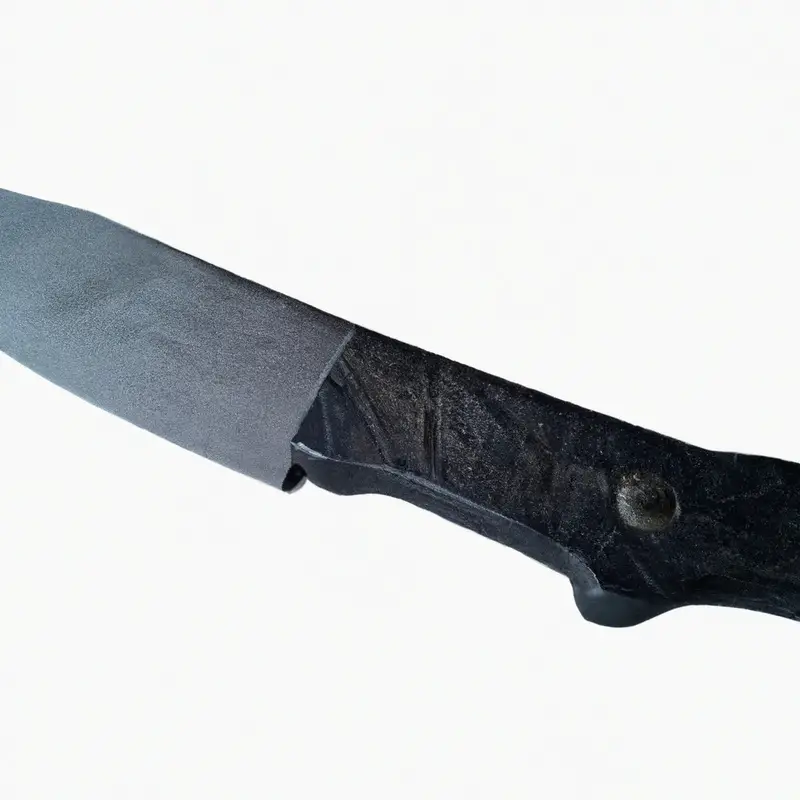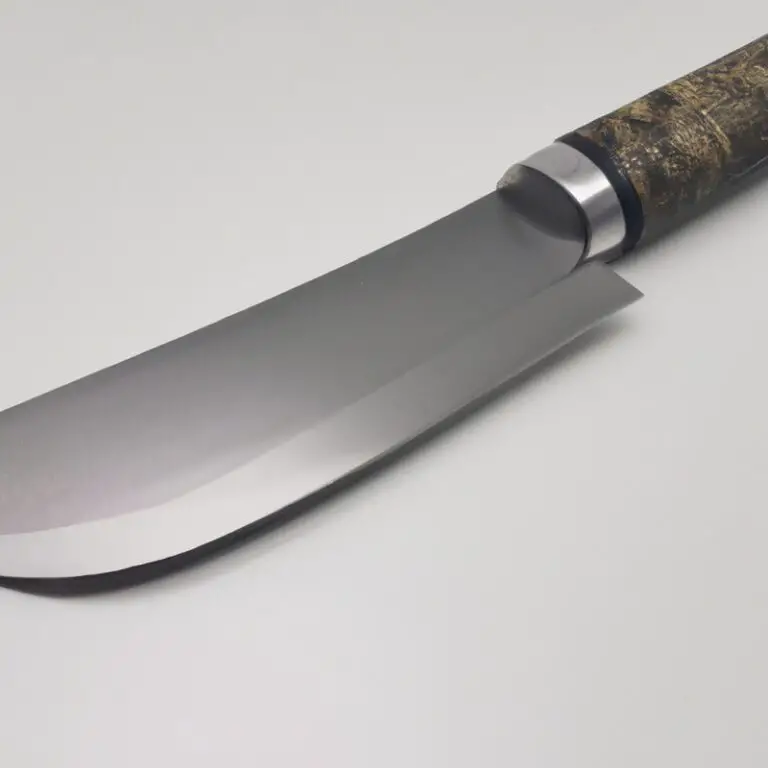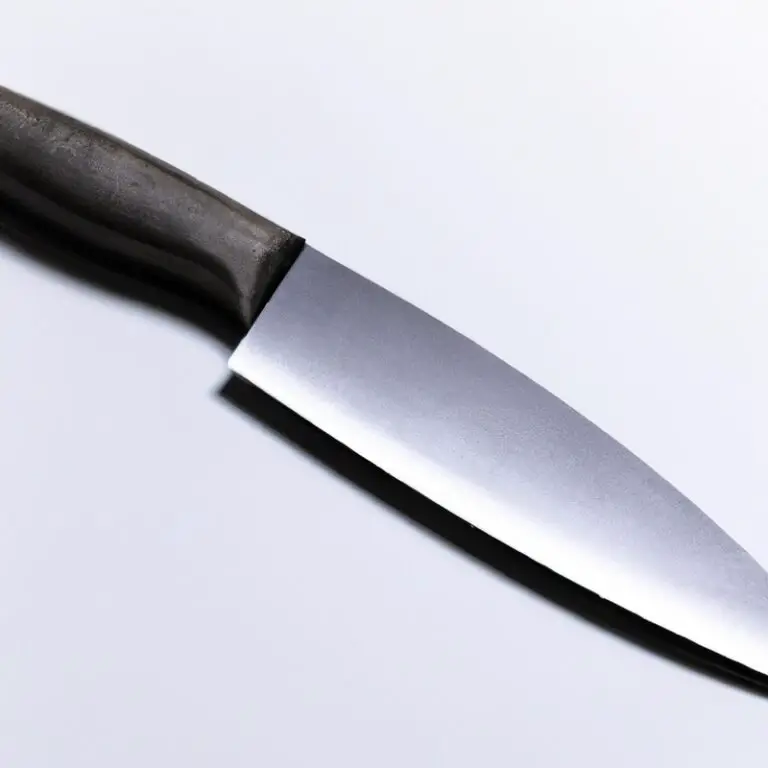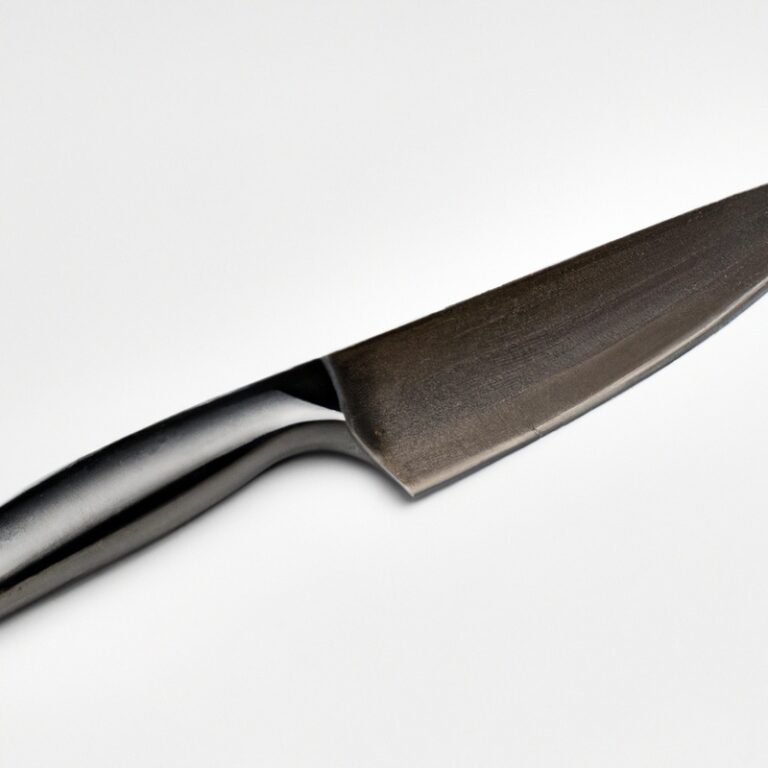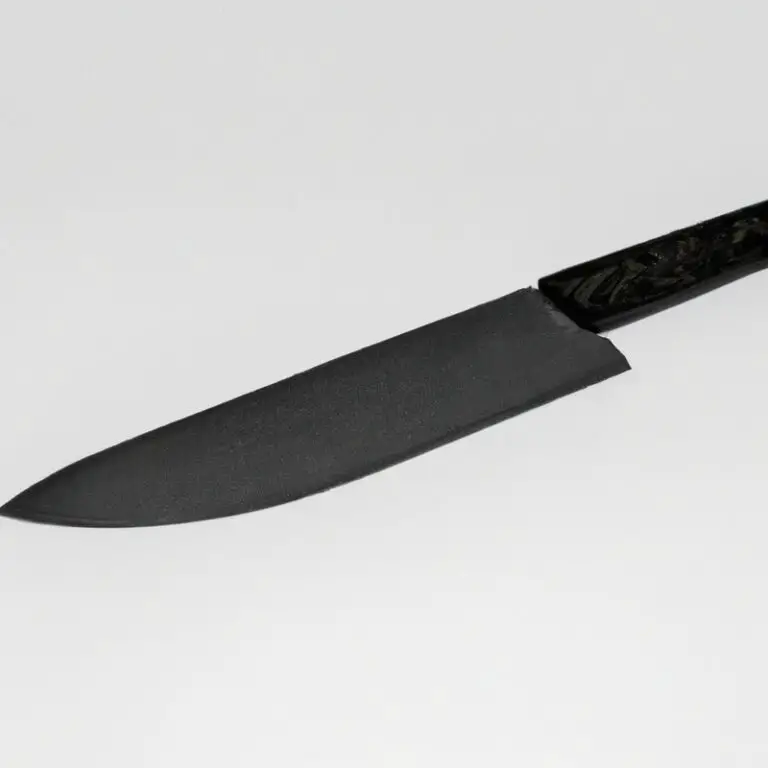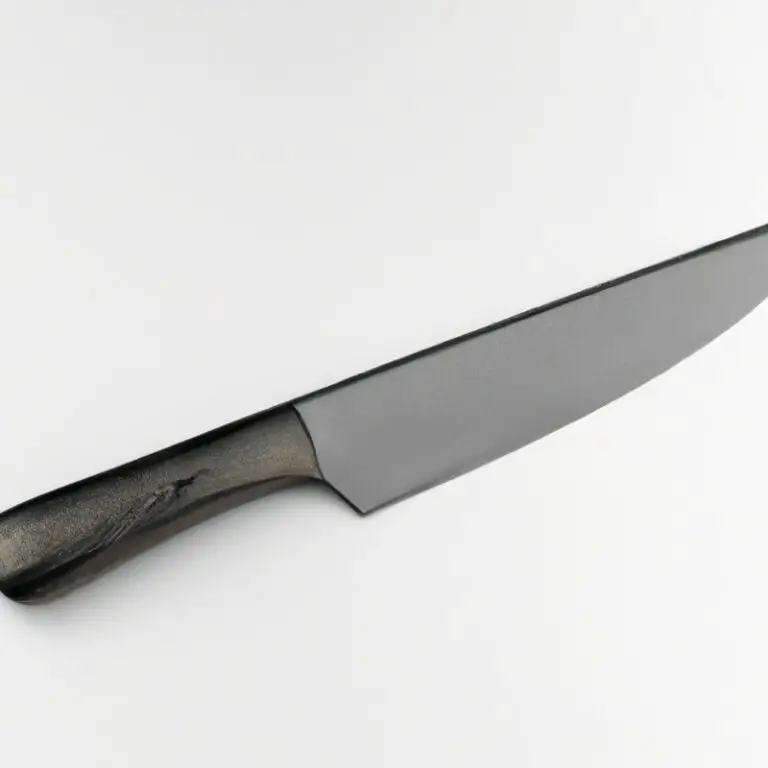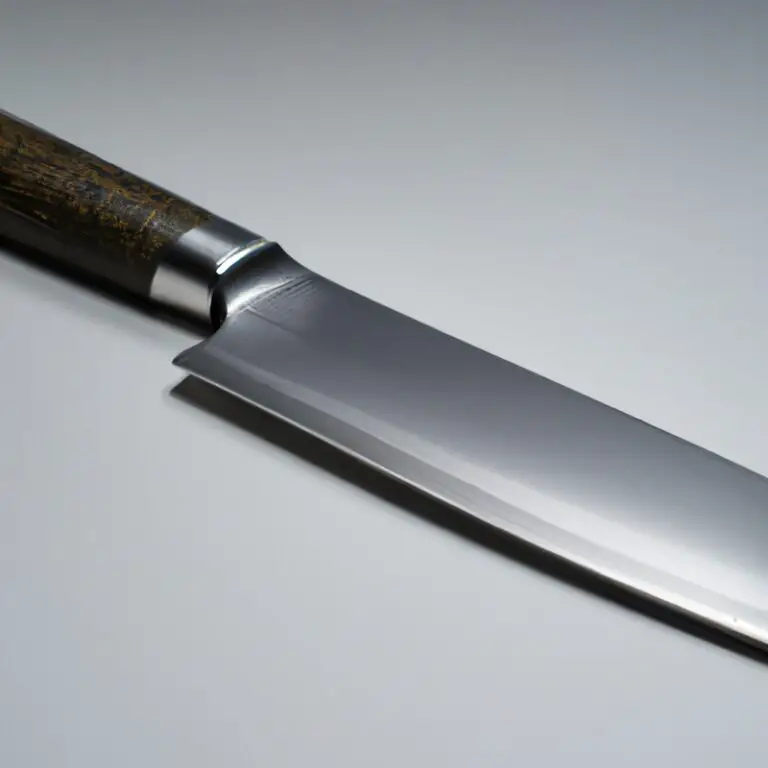What Are The Essential Features Of a Gyuto Knife For Professional Chefs? Mastering The Cut
Key Takeaways:
- A Gyuto knife should have a sharp, balanced blade to provide precision cuts for professional chefs.
- The handle of a Gyuto knife should fit comfortably in the hand, ensuring a secure grip and reducing the chances of accidents.
- High-quality materials, such as carbon steel or Damascus steel, are crucial for durability and longevity in a Gyuto knife.
- A well-maintained Gyuto knife can be a versatile and valuable tool for any professional chef looking to elevate their culinary skills.
As a professional chef, your knife is a crucial tool that could mean the difference between a perfectly executed dish and a failed one. While there’s a wide variety of knives available out there, Gyuto knives have been increasingly gaining popularity in the kitchens of professional chefs worldwide.
Known for their precision, versatility, and agility, these Japanese knives possess unique features that make them a popular choice.
In this article, I’ll guide you through the essential features of a Gyuto knife that every professional chef should consider. From blade material to handle design and maintenance techniques, this comprehensive guide will help you make an informed decision on selecting the right Gyuto knife for your specific needs.
| Feature | Description |
|---|---|
| Blade Material | A high-quality blade material such as high-carbon stainless steel or Damascus steel. The material should offer a balance of durability, sharpness, and corrosion resistance. |
| Blade Length | An optimal blade length of approximately 8 to 10 inches. This length allows for versatility in cutting tasks while also providing enough control for precision work. |
| Blade Thickness | A thin blade is preferred for clean cuts and minimal wastage. A thickness of around 2.5mm-3mm is generally considered optimal. |
| Edge Angle | A steep edge angle of around 15 degrees. This provides maximum sharpness for efficient cutting and slicing. |
| Handle Material | A comfortable and durable handle material such as wood, micarta, or G-10. The handle should be slip-resistant and offer a secure grip. |
| Bolster | A bolster provides balance and support for the blade. A tapered bolster can make sharpening and maintenance easier. |
| Weight | An appropriate weight of around 6-8 ounces. This weight provides balance and control without causing fatigue during extended use. |
Blade Material: The importance of selecting high-quality steel for a Gyuto knife
The blade material is a crucial feature to consider when selecting a Gyuto knife. High-quality steel, such as VG-10, AUS-10, or SG-2, provides better edge retention, corrosion resistance, and durability, making it worth the investment for professional chefs.
The type of steel used also affects the knife’s sharpness and ease of sharpening.
Cheaper steels may require frequent sharpening, resulting in reduced longevity and higher maintenance costs. Therefore, it is essential to choose a Gyuto knife made of high-quality steel to ensure optimal performance and longevity in a professional kitchen.
Blade Shape: Understanding the unique shape of a Gyuto knife and its benefits
The blade shape of a Gyuto knife is unique and has many benefits for professional chefs. The blade is similar to a Western-style knife, but with a thinner and sharper edge.
The edge is also curved, which allows the chef to rock the blade back and forth for efficient slicing and chopping.
This shape is ideal for precision tasks such as slicing vegetables, meats, and fish. The pointed tip also enables intricate cuts and piercing tasks.
The blade shape of a Gyuto knife contributes to its versatility and ability to handle a range of cutting requirements, making it an essential tool in a chef’s kitchen.
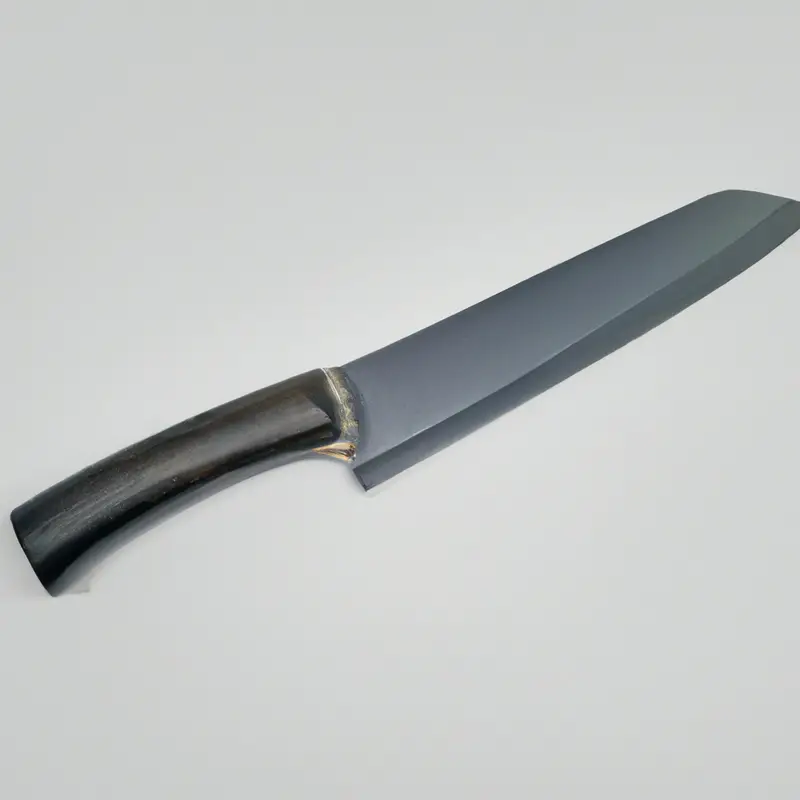
Blade Length: Determining the ideal blade length for your specific needs as a chef
Blade length is an important consideration when choosing a gyuto knife. A blade length of 210-240mm is usually ideal for most chefs as it is apt for performing a range of tasks from chopping herbs to slicing meats and vegetables.
However, it also comes down to individual preferences and the size of the chef’s hands, the height of the cutting board, and the type of dishes they tend to make.
For instance, a smaller blade would work better for chefs who focus more on precision work, while longer blades are better suited for chefs who work with large cuts of meat. Ultimately, your comfort and intended use should guide you in determining the ideal blade length for your specific needs as a chef.
Blade Thickness: Choosing a blade thickness that balances agility and strength
Blade thickness is a crucial factor that needs to be considered carefully when selecting a Gyuto knife for professional use. A thinner blade offers more agility, allowing for precise cutting and chopping, but it may compromise the knife’s strength.
On the other hand, a thicker blade provides more strength and durability but may be inconvenient for intricate cutting tasks.
The ideal blade thickness for a Gyuto knife will depend on the chef’s preference and the cooking tasks they usually perform. Choosing a blade thickness that balances agility and strength is essential for efficient and comfortable use of a Gyuto knife in a professional kitchen.
Handle Material: Evaluating handle materials for comfort, grip, and durability
When choosing a Gyuto knife handle, comfort is essential to prevent hand fatigue and minimize the risk of injuries. The material should be durable enough to withstand the stress of daily use, and a comfortable grip is crucial for precision and control during cuts.
Common handle materials include wood, plastic, and metal, each with its own benefits and drawbacks.
Wooden handles are often favored for their natural feel, grip, and customizability, but they may require extra maintenance to avoid warping or cracking. Plastic handles are durable, lightweight, and easy to clean, but they may not provide the same tactile feedback as wooden or metal ones.
Metal handles are often preferred for their sturdiness and aesthetics, but they may be heavier than other materials and require insulation to prevent heat transfer.
Ultimately, the handle material should match the user’s individual preferences and cooking needs.
Handle Design: Balancing ergonomics and aesthetics when selecting a Gyuto knife handle
The handle design of a Gyuto knife is crucial for achieving a comfortable and secure grip while cutting. When selecting a handle, it is essential to strike a balance between aesthetics and ergonomics.
Aesthetics refer to the visual appeal of the handle, while ergonomics ensure maximum comfort and reduced hand fatigue during extended use.
The handle material may vary from traditional wood to modern materials like G-10 and Micarta. It is vital to consider the size, shape, and texture of the handle, ensuring that it fits your hand comfortably and doesn’t slip during use.
The right handle design enhances performance and makes the cutting process more precise and effortless.
Full vs Half Tang: Weighing the benefits and drawbacks of full versus half tang designs
Full tang knives have the blade’s metal extend through the handle, providing balance and stability, making them more durable. They are also more comfortable to handle for extended periods.
On the other hand, half tang knives have the blade’s metal extend only partially through the handle, making them more lightweight and flexible.
However, they are less balanced and stable. Ultimately, the decision between a full or half tang depends on personal preferences and individual needs.
But it’s important to note that a full tang knife is generally considered to be superior in terms of durability and stability.
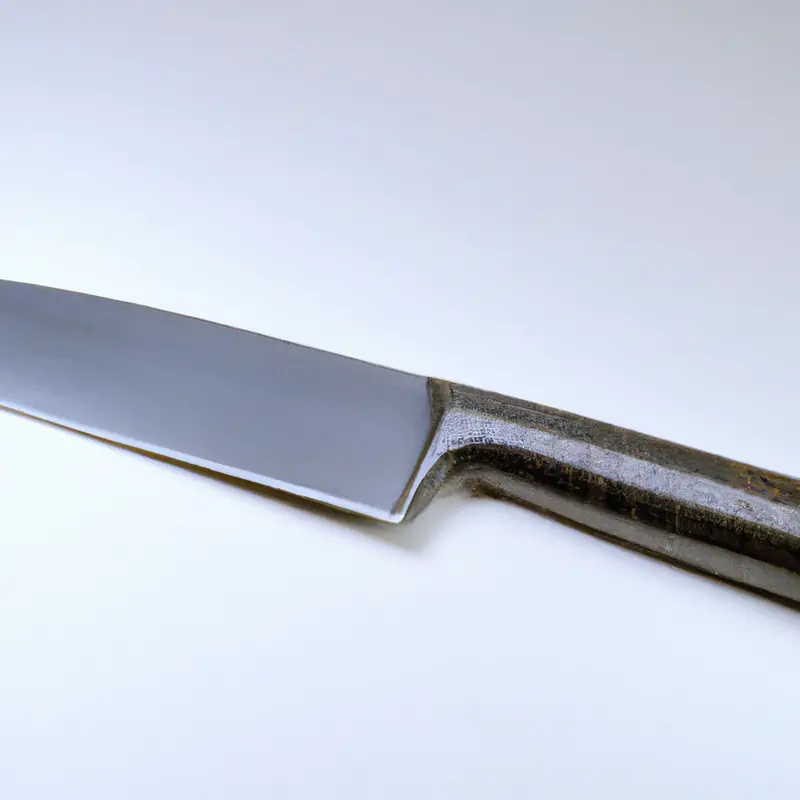
Weight: Finding the perfect balance between weight and agility for your cooking style
Weight is a crucial factor to consider when choosing a Gyuto knife for your cooking style. The weight of the knife will impact its agility and maneuverability.
A lighter knife is more agile and allows for greater precision, but it may lack the force needed for certain cutting tasks.
A heavier knife, on the other hand, provides greater force for tough cuts, but may sacrifice agility. When selecting a Gyuto knife, it’s important to choose a weight that complements your cooking style.
For delicate tasks that require precision, a lighter knife would be ideal.
For heavy-duty tasks like cutting through bone, a slightly heavier knife may be necessary. It’s crucial to find the perfect balance between weight and agility to maximize efficiency in the kitchen.
Edge Retention: Factors that influence the edge retention of a Gyuto knife
Edge retention is crucial for a Gyuto knife, as it determines how long the knife will remain sharp. The factors that influence edge retention include the type of steel used to make the blade and the hardness of the steel.
The heat treatment during manufacturing also plays a role, as does the angle of the blade’s edge.
Proper use and maintenance, such as honing and sharpening, can also help maintain the edge retention of the knife. It is important to consider these factors when selecting a Gyuto knife for professional use, as edge retention directly affects its effectiveness and longevity in the kitchen.
Sharpness: Understanding the importance of sharpness and how to maintain it for a Gyuto knife
Sharpness is the most critical aspect of any knife because it determines the ease and precision with which it cuts through food. A dull knife produces uneven cuts, increases the chances of injury, and requires more effort to use, which can hamper the cooking process.
Therefore, maintaining the sharpness of a Gyuto knife should be a high priority for any professional chef.
One way to keep a Gyuto knife sharp is by honing it regularly with a honing steel. Honing realigns the blade’s edge, keeping it sharp for longer.
Another way to maintain sharpness is by sharpening the blade at regular intervals using a sharpening stone.
It is important not to sharpen too frequently as the blade may get damaged, and also not to use sharpeners made for other knives as they may cause scratches or deformations. Lastly, always store the knife properly in a knife block or sheath and avoid storing it with other utensils.
Taking care of the sharpness of a Gyuto knife will ensure precise and effortless cuts, making a chef’s work efficient and more enjoyable.
Versatility: Exploring the versatility of a Gyuto knife and its value in a professional kitchen
The Gyuto knife is a versatile tool in the professional kitchen, capable of handling a variety of cutting tasks. With its sharp blade and pointed tip, it can be used for precise cuts such as trimming fat or breaking down poultry.
The long, thin blade is also ideal for slicing meats or fish with ease.
Its versatility doesn’t end there – the Gyuto knife can also handle chopping, dicing, and mincing with skill. Its ability to handle a wide range of cutting tasks makes it a valuable addition to any chef’s knife collection.
Care and Maintenance: Proper care and maintenance techniques to extend the life of your Gyuto knife
To ensure the longevity of your Gyuto knife, it’s essential to follow proper care and maintenance techniques. Here are some tips to help you maintain your knife:
- Clean your knife after each use using warm soapy water and a sponge. Dry it thoroughly before storing it.
- Avoid using the dishwasher as it may damage the knife’s blade and handle.
- Sharpen your knife regularly using a honing rod or sharpening stone.
- Store your knife in a knife block, magnetic strip, or blade guard to protect the blade and prevent injury.
- Do not use the blade to pry open cans or containers as it can cause damage to the blade.
- Use a cutting board made of wood or plastic, preferably one designed for knives, to avoid damaging the blade.
By following these care and maintenance techniques, you can extend the life of your Gyuto knife and ensure that it remains a valuable tool in your kitchen for years to come.
Final Verdict
A Gyuto knife can be a valuable asset for professional chefs, offering unparalleled versatility and precision. Selecting the right blade material, shape, length, thickness, handle material, design, and tang, as well as finding the ideal weight, edge retention, sharpness, and maintenance techniques, can make all the difference in achieving culinary excellence.
As a chef, investing in a high-quality Gyuto knife and taking care of it can not only improve your performance in the kitchen but also elevate your craft to new heights.
Trust the expertise and recommendations of seasoned professionals to guide your decision-making and unlock the full potential of your culinary artistry.

